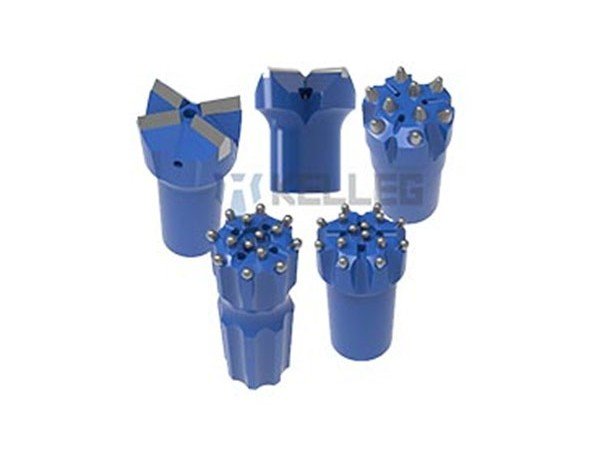How to choose the steel material of rock drill bit?
Rock drill bits are the part that directly breaks the rock mass and are widely used in rock drilling engineering. The service life of rock drill bit will directly affect the rock drilling efficiency and economic benefits of the construction project. The factors affecting the service life of rock drill bit have a great relationship with the selection of its steel material.
The selection of steel material for the rock drill bit should be based on the requirements of service conditions and manufacturing process of the rock drill bit and has good economic benefits.

Principles of steel material selection for rock drill bit
- Good impact fatigue and wear resistance, good heat treatment performance, wear resistance, high fastening force to carbides, and the hardness of the drill bit steel should be around HRC45. At the same time, the steel of the drill bit should have a higher yield limit, fatigue strength, and fracture toughness to prevent early failure of the drill bit.
- Good process performance. Requires the rock drill bit material hardness not more than HB260 after annealing, easy cutting and processing, good hardenability and hardenability, good weldability, and the metallographic organization after heat treatment meets the requirements.
The steel material of rock drill bit usually uses high-strength alloy steel or high manganese steel. These materials have excellent abrasion and impact resistance, providing long-lasting performance in harsh working environments. The following is the introduction of three types of steel for rock drill bits.
Three types of steel for rock drill bits - Q45NiCrMoV
It is a steel-grade drill bit suitable for thermal inserting technology. In addition to meeting the general requirements of the steel used for drill bits, the main feature is that the steel maintains a hardness of about HRC45 and has good strength and toughness under the heat treatment of toughening at 600°C and below. In addition, in this tempering interval, the steel has a higher coefficient of thermal expansion, which provides favorable conditions for hot embedded teeth. - 24SiMnNi2CrMo
This kind of steel is a low-carbon martensitic steel for induction brazing technology. This low-carbon martensitic steel containing high silicon is basically a mixture of slate-like martensite and residual austenite. The steel has a relatively long anti-fatigue life because it fully utilizes the stable retained austenite and prevents the development of microscopic defects along the martensite in the steel. Low carbon martensite has high strength combined with good toughness and plasticity but also has a lower cold brittle transition temperature, its notch sensitivity and overload sensitivity are lower. The steel processing quality is easy to control, good cutting performance, heat treatment process is easy to manage, but the price is more expensive. - 40MnMoV
The steel contains Mn, Mo, Si, and other alloying elements. Mn can reduce the critical cooling rate, increase hardenability, reduce heat treatment deformation, and improve the hardness and strength of steel. Mo can strengthen ferrite, form carbide, refine grain, and make the "C" curve of the pearlite transformation zone right shift, which is the main factor in the forming of bainitic steel. It can also effectively increase the hardenability of steel and reduce temper brittleness. The addition of V can form carbides and increase the hardness of ferrite. A small amount of Si can also strengthen ferrite, improve hardenability, and increase wear resistance.